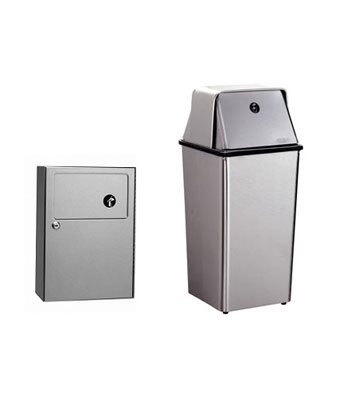Antibacterial Air Filter for Evaporative Cooler
$0.00Introduction
A particulate air filter is a device composed of fibrous materials which removes solid particulates such as dust, pollen, mold, and bacteria from the air. Antibacterial air filters are widely used to prevent the growth of bacteria inside the evaporative coolers; the growth of bacteria is attributed to the wet environment inside the coolers. By addition of silver nanoparticles to the filter cloth, silver ions are released within its structure and prevent the growth of bacteria. The concentration of silver ion in this product is 165 ppm.
Antibacterial Air Filter for Evaporative Cooler
$0.00Introduction
A particulate air filter is a device composed of fibrous materials which removes solid particulates such as dust, pollen, mold, and bacteria from the air. Antibacterial air filters are widely used to prevent the growth of bacteria inside the evaporative coolers; the growth of bacteria is attributed to the wet environment inside the coolers. By addition of silver nanoparticles to the filter cloth, silver ions are released within its structure and prevent the growth of bacteria. The concentration of silver ion in this product is 165 ppm.
Antibacterial Air Filter for Evaporative Cooler
$0.00Introduction
A particulate air filter is a device composed of fibrous materials which removes solid particulates such as dust, pollen, mold, and bacteria from the air. Antibacterial air filters are widely used to prevent the growth of bacteria inside the evaporative coolers; the growth of bacteria is attributed to the wet environment inside the coolers. By addition of silver nanoparticles to the filter cloth, silver ions are released within its structure and prevent the growth of bacteria. The concentration of silver ion in this product is 165 ppm.
Antibacterial Chinawear with Hydrophobic Coating
$0.00Introduction
Washing porcelain dishes after a meal is a tedious work. During washing, greasy porcelain dishes are very slippery in hand. Also, in some cases fat stains remain after washing. Moreover, surface of a dish due to direct contact with the hands or leftovers is a good place for growth of bacteria and fungi. The aforementioned problems can be obviated with the aid of nanotechnology; to do this, chinaware with hydrophobic and antibacterial surfaces are produced by the addition of silicon and zinc nanoparticles, respectively. The chinaware produced by this company are classified in two different groups:
- Hydrophobic chinawear
- Antibacterial chinawear
Antibacterial Chinawear with Hydrophobic Coating
$0.00Introduction
Washing porcelain dishes after a meal is a tedious work. During washing, greasy porcelain dishes are very slippery in hand. Also, in some cases fat stains remain after washing. Moreover, surface of a dish due to direct contact with the hands or leftovers is a good place for growth of bacteria and fungi. The aforementioned problems can be obviated with the aid of nanotechnology; to do this, chinaware with hydrophobic and antibacterial surfaces are produced by the addition of silicon and zinc nanoparticles, respectively. The chinaware produced by this company are classified in two different groups:
- Hydrophobic chinawear
- Antibacterial chinawear
Antibacterial Chinawear with Hydrophobic Coating
$0.00Introduction
Washing porcelain dishes after a meal is a tedious work. During washing, greasy porcelain dishes are very slippery in hand. Also, in some cases fat stains remain after washing. Moreover, surface of a dish due to direct contact with the hands or leftovers is a good place for growth of bacteria and fungi. The aforementioned problems can be obviated with the aid of nanotechnology; to do this, chinaware with hydrophobic and antibacterial surfaces are produced by the addition of silicon and zinc nanoparticles, respectively. The chinaware produced by this company are classified in two different groups:
- Hydrophobic chinawear
- Antibacterial chinawear
Antibacterial Rubbish Bin
$0.00Introduction
A waste container is usually made of metal or plastic. These containers are made of polymers such as polypropylene (PP). Because of having a low production cost, PP has a broad range of applications. The use of antimicrobial PP which is a class of polymers with antibacterial activity has been continuously increased. This is due to the fact that the polymer materials can be easily surrounded by bacteria or fungi, which consequently results in the transmission of diseases and severe infections. Prevention of microbial colonization onto the polymeric surfaces can be fulfilled by adding active antimicrobial agent like silver nanoparticles into the polymers. Silver ions and its compounds are extremely lethal for a wide range of bacteria, whilst they show very low toxicity for human cells. It should be noted that the polymer-silver nanocomposite maintains its antibacterial effect, as if its antibacterial efficiency against a wide variety of bacteria has been widely reported.
Antibacterial Rubbish Bin
$0.00Introduction
A waste container is usually made of metal or plastic. These containers are made of polymers such as polypropylene (PP). Because of having a low production cost, PP has a broad range of applications. The use of antimicrobial PP which is a class of polymers with antibacterial activity has been continuously increased. This is due to the fact that the polymer materials can be easily surrounded by bacteria or fungi, which consequently results in the transmission of diseases and severe infections. Prevention of microbial colonization onto the polymeric surfaces can be fulfilled by adding active antimicrobial agent like silver nanoparticles into the polymers. Silver ions and its compounds are extremely lethal for a wide range of bacteria, whilst they show very low toxicity for human cells. It should be noted that the polymer-silver nanocomposite maintains its antibacterial effect, as if its antibacterial efficiency against a wide variety of bacteria has been widely reported.
Antibacterial Rubbish Bin
$0.00Introduction
A waste container is usually made of metal or plastic. These containers are made of polymers such as polypropylene (PP). Because of having a low production cost, PP has a broad range of applications. The use of antimicrobial PP which is a class of polymers with antibacterial activity has been continuously increased. This is due to the fact that the polymer materials can be easily surrounded by bacteria or fungi, which consequently results in the transmission of diseases and severe infections. Prevention of microbial colonization onto the polymeric surfaces can be fulfilled by adding active antimicrobial agent like silver nanoparticles into the polymers. Silver ions and its compounds are extremely lethal for a wide range of bacteria, whilst they show very low toxicity for human cells. It should be noted that the polymer-silver nanocomposite maintains its antibacterial effect, as if its antibacterial efficiency against a wide variety of bacteria has been widely reported.
Utensils with Golden Nanostructured Coating
$0.00Introduction
- Tray
- Tea set
- Salad plate
- Soup bowl
- Catering dish
- Hot drinks holders
- Candlestick
Utensils with Golden Nanostructured Coating
$0.00Introduction
- Tray
- Tea set
- Salad plate
- Soup bowl
- Catering dish
- Hot drinks holders
- Candlestick
Utensils with Golden Nanostructured Coating
$0.00Introduction
- Tray
- Tea set
- Salad plate
- Soup bowl
- Catering dish
- Hot drinks holders
- Candlestick






